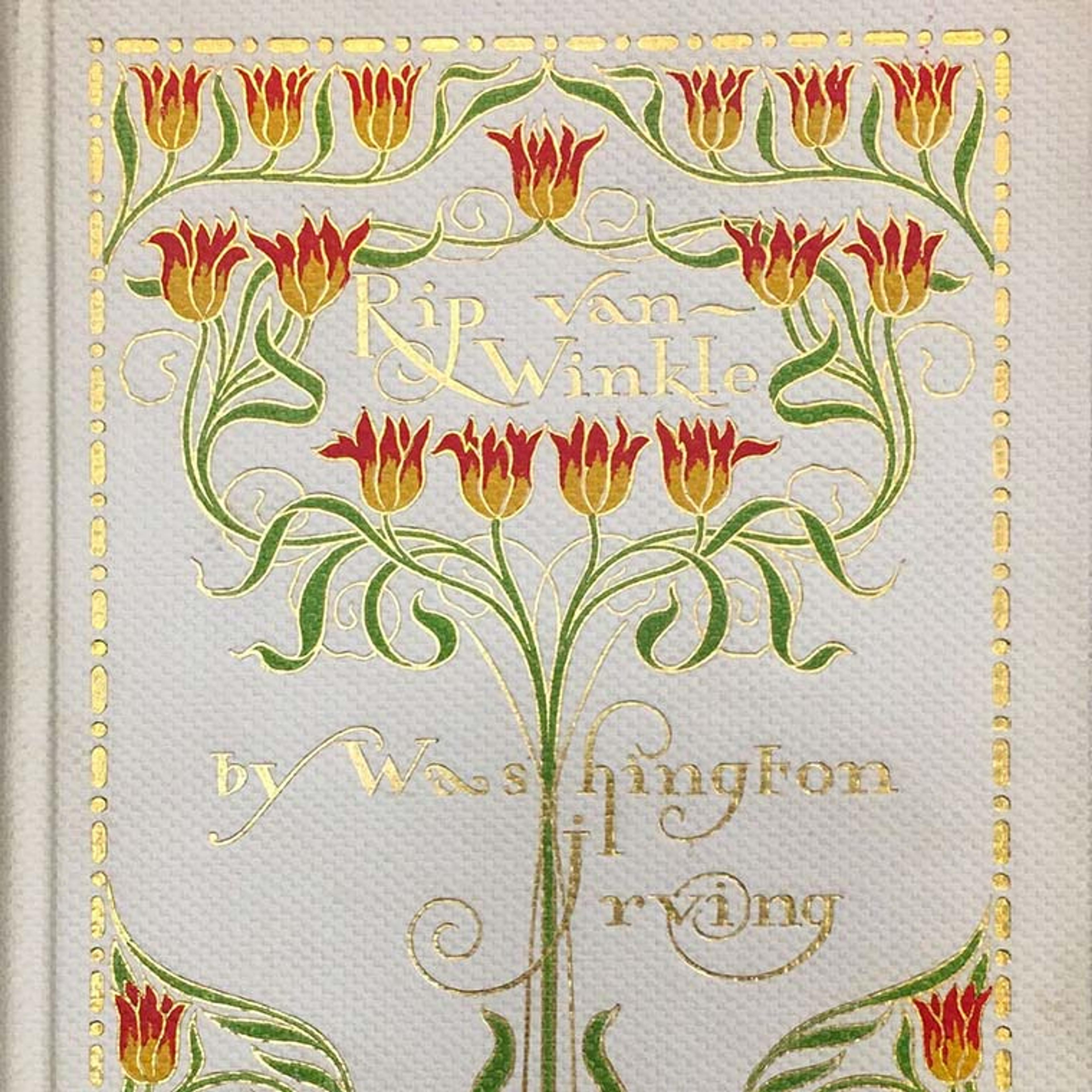Robert Browning, Pippa Passes (New York: Dodd Mead & Co., 1901)
In late February, my colleague Andrijana Sajic, Senior Book Conservation Coordinator, and I installed a colorful selection of Margaret Neilson Armstrong's decorated bindings featuring two of her series editions for which she is best known: Henry J. Van Dyke's dark blue cloth and Myrtle Reed's lavender series. The display inaugurated our newly inherited, handsome wood vitrines, which had formerly been in the medieval galleries since the 1910s. With many of Armstrong's cover designs depicting a variety of flowers, the timing of the display coincided perfectly with the onset of spring.
What we did not know then was that an outbreak of the coronavirus would soon hit New York City and the world, and our lives would change overnight.
Soon after the installation, to protect the public's health and safety, the Museum closed its doors. A reopening date has not been determined.
During these challenging times, the Library staff continues to work from home on a variety of remote services, projects and initiatives including a series of articles on the history of The Met's great library on our blog, In Circulation, to commemorate the Library's 150th anniversary year.
The Margaret Armstrong display, originally scheduled to be on view through the Spring, will now be extended through the summer. We look forward to seeing you when the Library reopens. In the meantime, please enjoy a virtual display of the installation below.
Armstrong, born in 1867 to an affluent and artistic family in New York City, was a well-known author, field collector, book cover designer, and botanical illustrator. Her father, David Maitland Armstrong was a stained-glass artist and diplomat. Her younger sister, Helen Maitland Armstrong, was a stained-glass artist with whom she collaborated on various illustration projects. Armstrong also wrote and illustrated the first comprehensive guide to wildflowers of the American west, Field Book of Western Wild Flowers (1915). Two copies are currently on display in The Met's Robert Wood Johnson, Jr. Gallery along with a selection of botanical watercolors and stained-glass designs by David, Margaret, and Helen Armstrong. The New York Society Library also has an Armstrong exhibition, The Book Beautiful: Margaret Armstrong & Her Bindings, which was scheduled to run from January 16 through August 31, 2020.
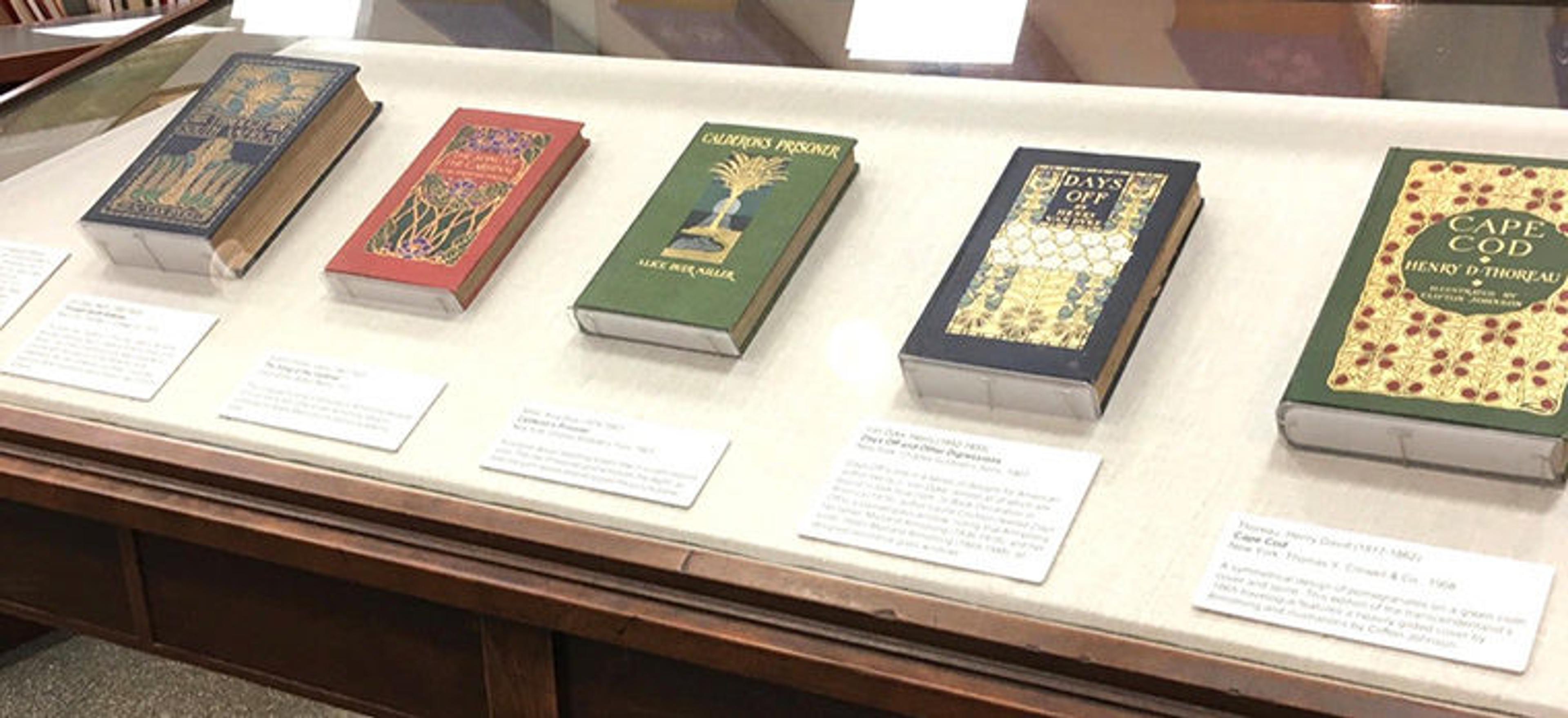
Vitrine display of Margaret Armstrong decorated bindings resembling stained glass windows
The first case features a selection of Armstrong bindings which resemble colorful stained glass.
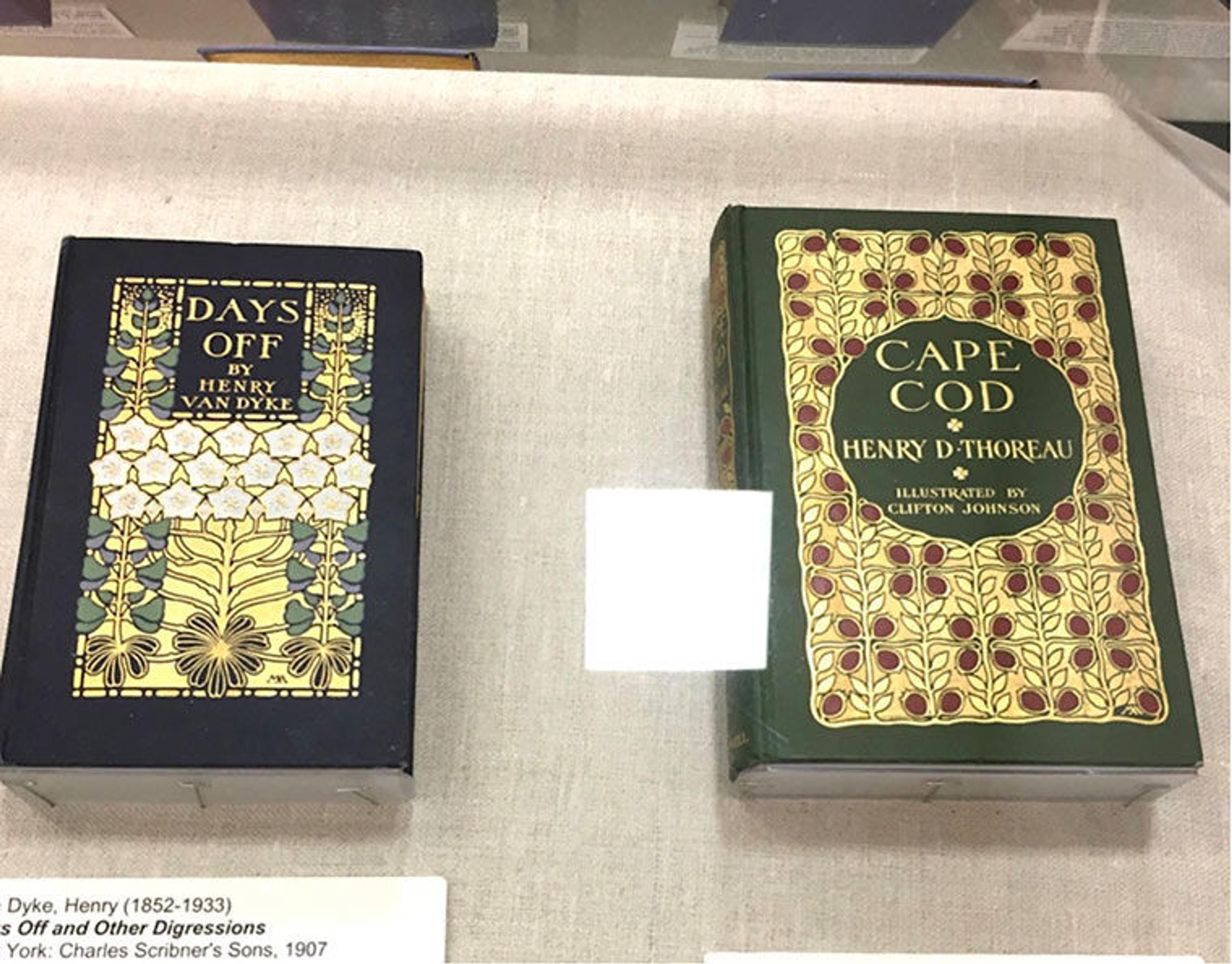
Henry Dyke, Days Off and Other Digressions (New York: Charles Scribner's Sons, 1907). Henry David Thoreau, Cape Cod (New York: Thomas Y. Crowell & Co., 1908)
In Book Decoration in America, Laurie Crichton likens the fourth book in this case, Days Off (above left) from the Henry Van Dyke series, to a stained-glass window, noting that Armstrong, her father, and her sister, all designed decorative glass windows. Cape Cod (above right), also striking in its resemblance to stained glass, has a heavily gilded symmetrical design of pomegranates on a green cloth cover and on the spine for this edition of this transcendentalist's 1865 travelogue with illustrations by Clifton Johnson.
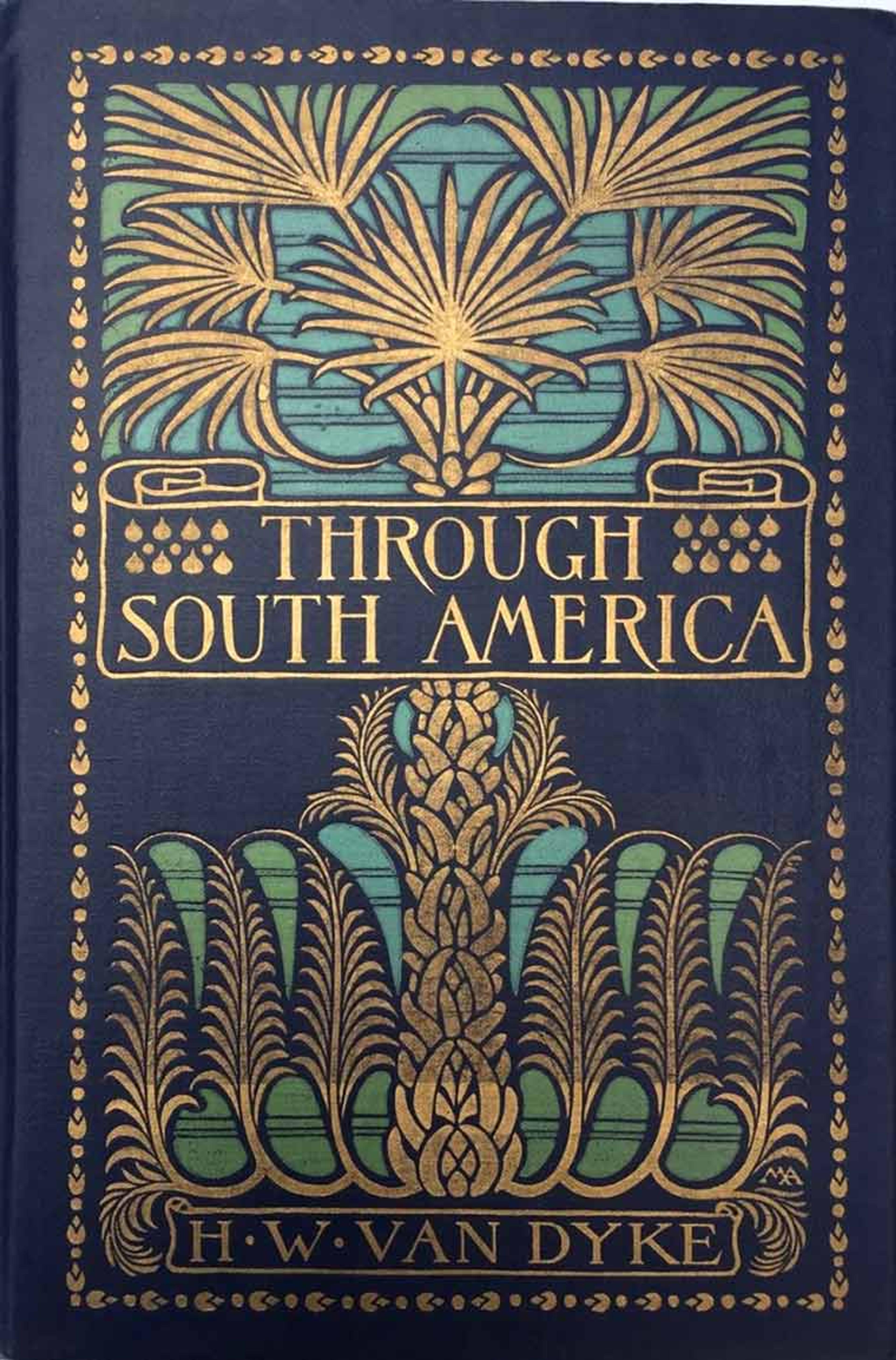
Harry Weston Van Dyke, Through South America (New York: Thomas Y. Crowell Co., 1912)
At far left, Through South America, written by Harry Weston Van Dyke, uses a two-tone textured stamping die to create a dynamic book cover design. Van Dyke's historical study was published to coincide with the opening of the Panama Canal. It includes black-and-white illustrations and a foldout map of South America.
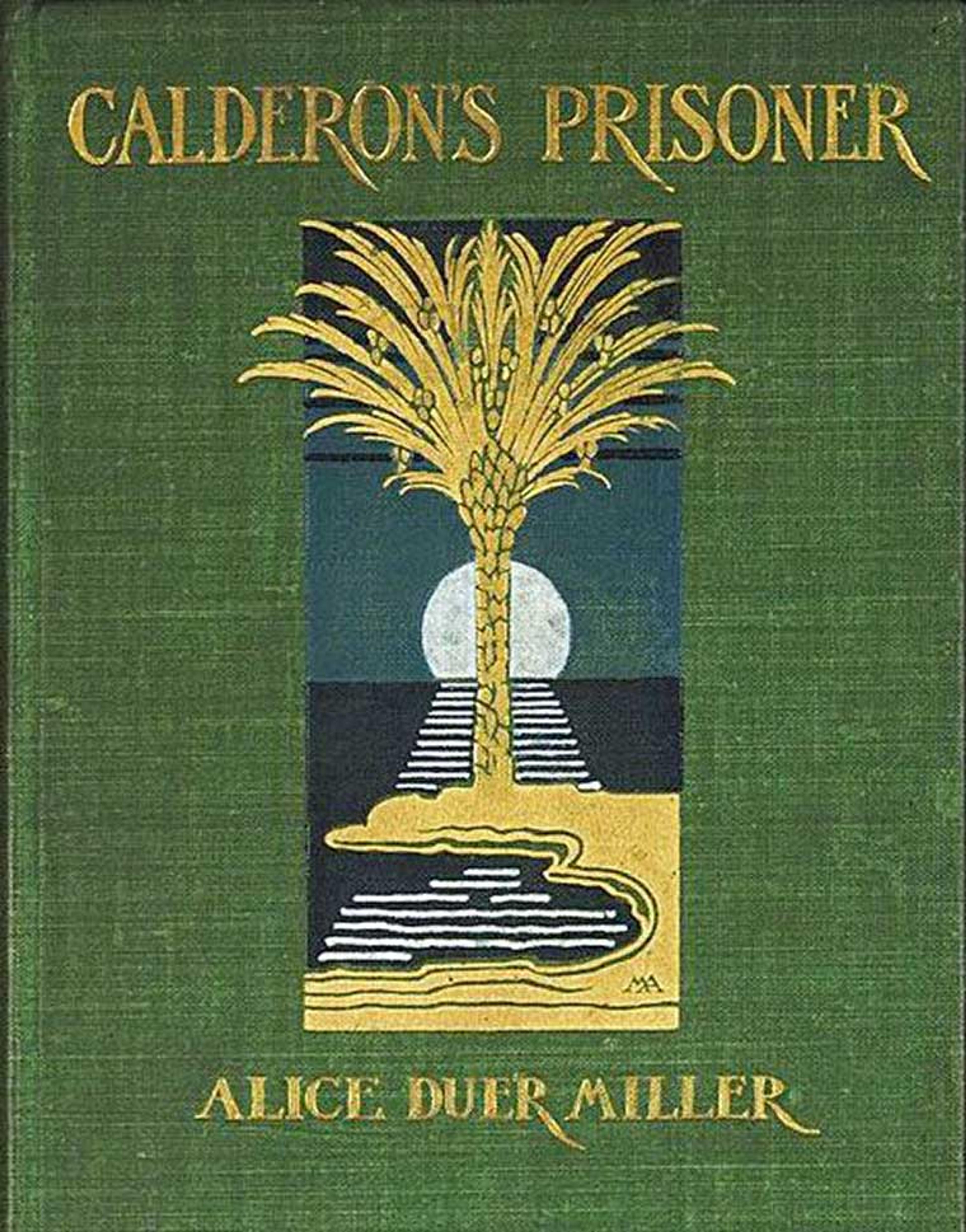
Alice Duer Miller, Calderon's Prisoner (New York: Charles Scribner's Sons, 1903)
The green decorated binding in the middle of the display, Calderon's Prisoner, has a pictorial design depicting a palm tree in a calm moonlit vista. The use of textured gold, as in Through South America, enhances the depth, as do the palm leaves extending past the picture plane.
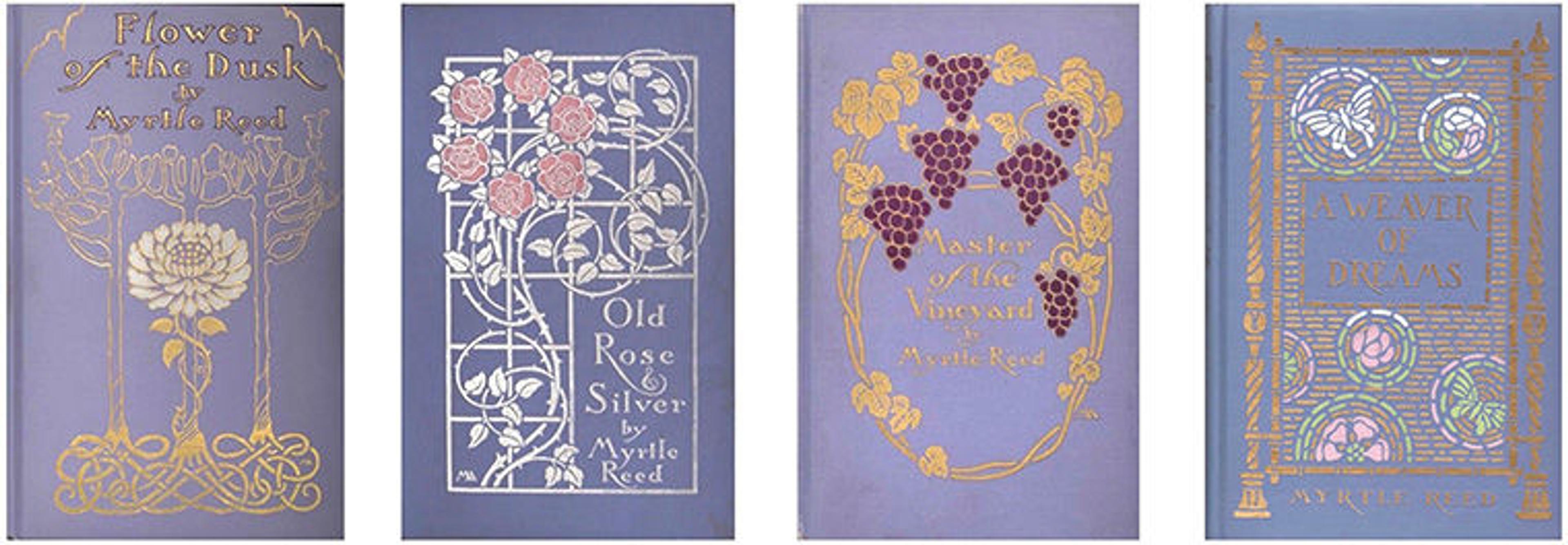
From left to right: Flower of the Dusk (New York; London: G.P. Putnam's Sons, 1910); Old Rose and Silver (New York: G.P. Putnam's Sons: Knickerbocker Press, 1909); Master of the Vineyard (New York: G.P. Putnam's Sons, 1910); A Weaver of Dreams (New York: G.P. Putnam's Sons, 1911)
The Library's display of Margaret Armstrong's vibrant bindings continues with a selection from her lavender series by author Myrtle Reed. Reed had success with the novel Lavender and Old Lace, and thereafter all of her books published by G.P. Putnam's Sons were covered in this distinctive lavender ribbed cloth. Five of the author's fifteen titles designed by Armstrong are displayed in this case.
At far left, The Master's Violin features an iris motif which was used on at least three other covers, including an identical design stamped only in gold, and a later printing by Grosset & Dunlap. Watson Library's copy has the original dust jacket with the same design.
Watson Library's copy of Old Rose and Silver has its original slipcase of moiré paper over board with the cover motif printed in pale mauve on front and back.
Master of the Vineyard, although divergent from Margaret Armstrong's distinctive other work (stylized with geometric floral repetition with a vertical emphasis), accommodates grapevines on the cover which echo motifs found in contemporary American stained glass.
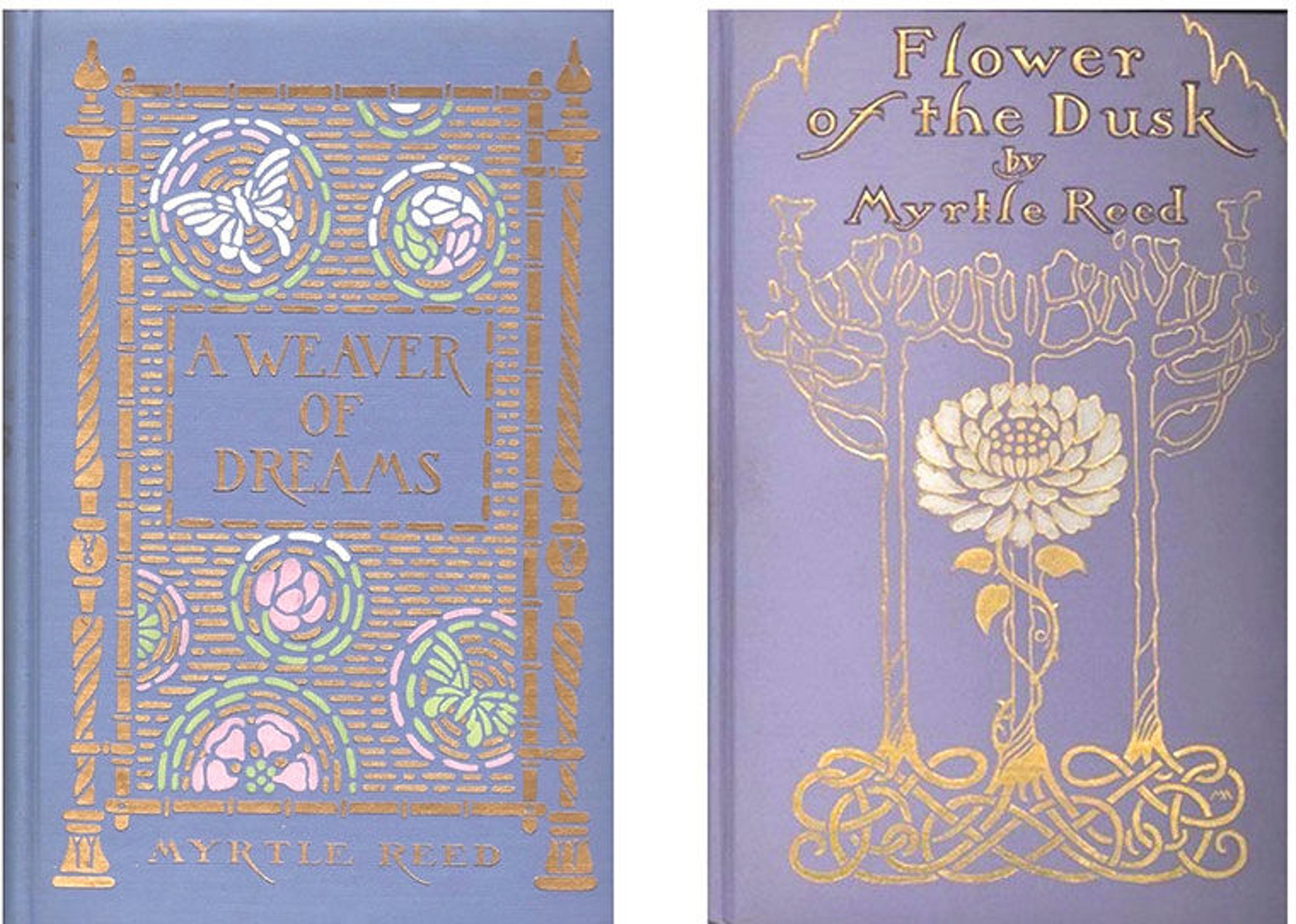
A Weaver of Dreams (New York: G.P. Putnam's Sons, 1911) and Flower of the Dusk (New York; London: G.P. Putnam's Sons, 1910)
The two lavender bindings on display in the case at far right (depicted above) are A Weaver of Dreams and Flower of the Dusk. Watson Library's copy of the later possesses the original slipcase with the cover motif printed in lavender on front and back.
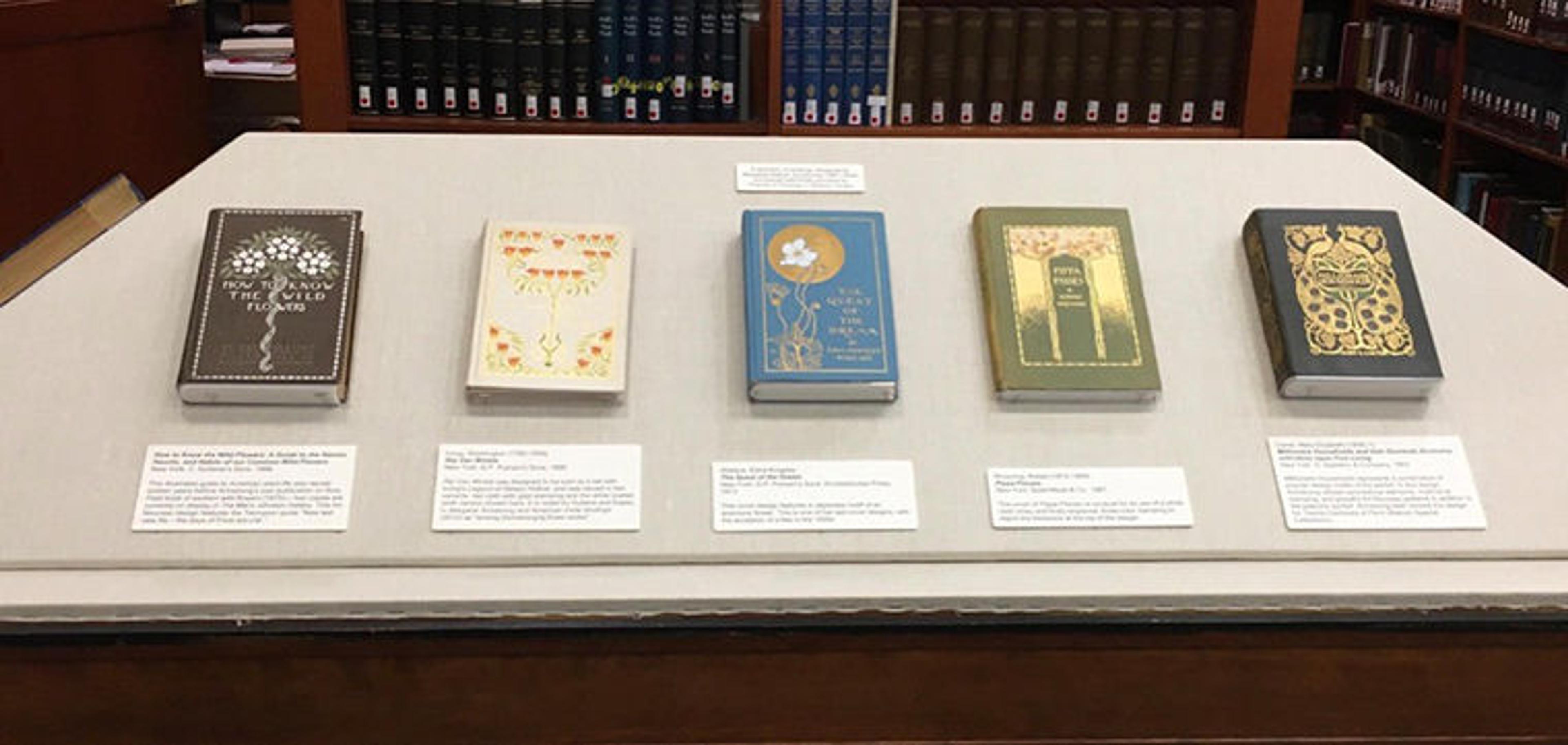
Vitrine display of floral binding designs
The second case celebrates the decorative bindings of Margaret Armstrong with different flower and plant types. The first binding in this case at far left, How to Know the Wild Flowers: A Guide to the Names, Haunts, and Habits of our Common Wild-Flowers on brown cloth, is an illustrated guide to American plant life, issued sixteen years before Armstrong's own publication on flora, Field book of Western Wild Flowers. This Art Nouveau design features the Tennyson quote "New leaf, new life—the days of Frost are o'er."
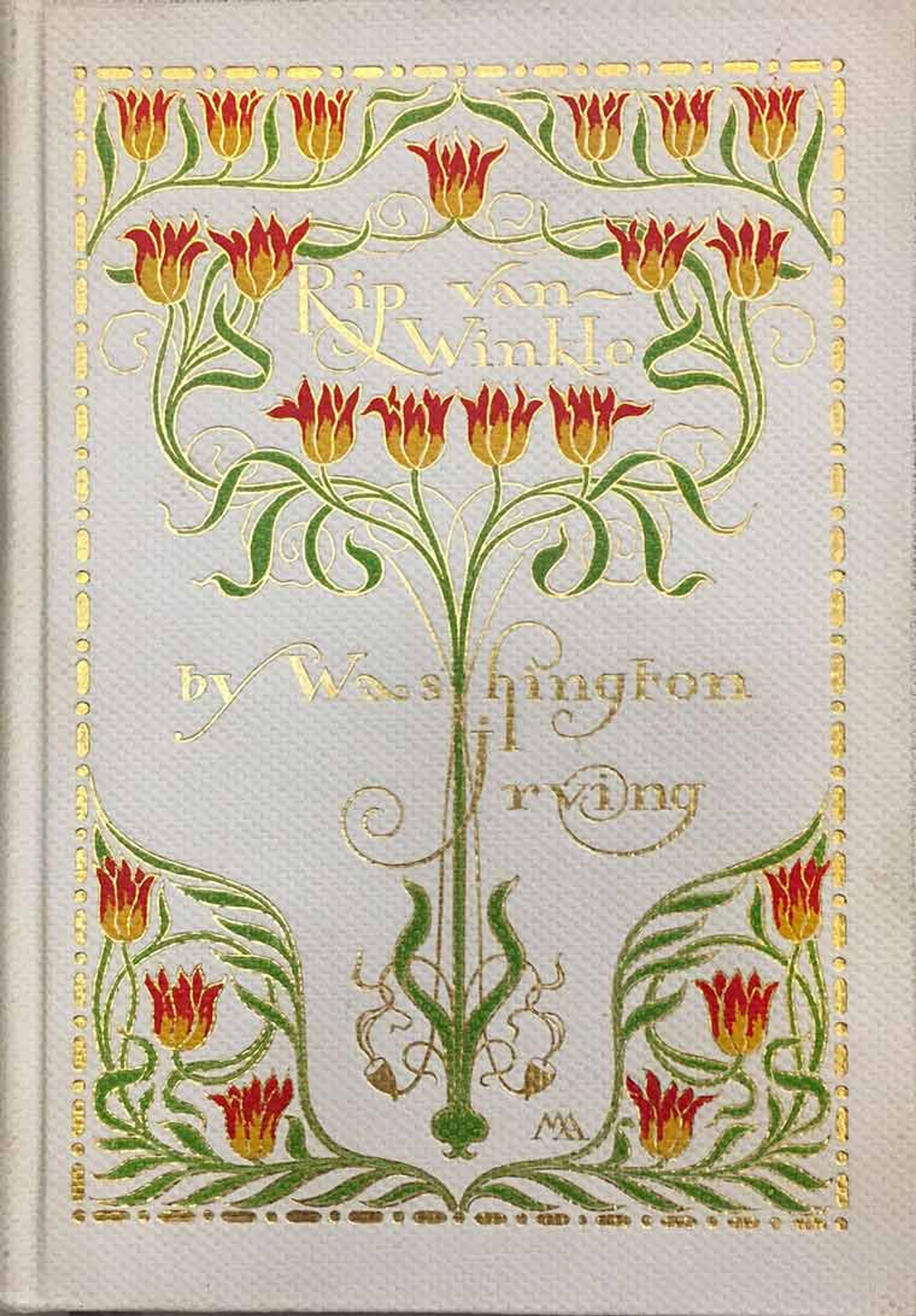
Washington Irving, Rip Van Winkle (New York: G.P. Putnam's Sons, 1899)
The second binding, Armstrong's cover for Washington Irving's Rip Van Winkle, was designed to be sold as a set with Irving's Legend of Sleepy Hollow, and was issued in two variants: red cloth with gold stamping and the white coated cloth version shown here. It is noted by Gullans and Espey in Margaret Armstrong and American Trade Bindings as "among [Armstrong's] finest works."
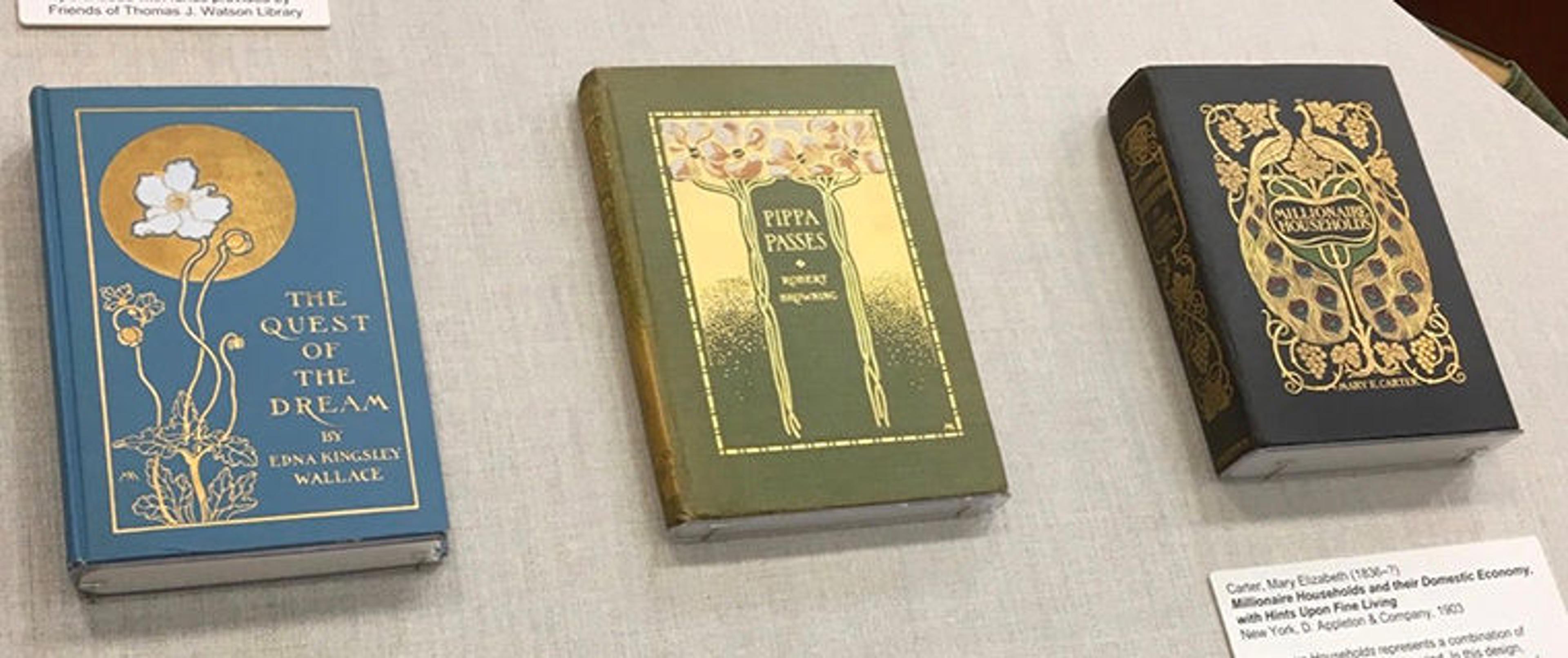
From left to right: Edna Kingsley Wallace, The Quest of the Dream (New York: G.P. Putnam's Sons: Knickerbocker Press, 1913); Robert Browning, Pippa Passes (New York: Dodd Mead & Co., 1901); Mary Elizabeth Carter, Millionaire Households (New York, D. Appleton & Company, 1903)
In the striking trio above, The Quest of the Dream, at left, features a Japanese motif of an anemone flower. This is one of her last cover designs, with the exception of a few in the 1920s. The popular Armstrong binding in the middle, Pippa Passes, is unusual for its use of a white cloth onlay and finely engraved, three-color stamping to depict the blossoms at the top of the design. And at right, Millionaire Households represents a combination of popular design motifs of the period. In this design, Armstrong utilized symmetrical elements, multi-tonal stamping, and graceful Art Nouveau grapevine and leaf patterns in addition to the peacock symbol. Armstrong later revised this design for Twenty Centuries of Paris by Mabell S.C. Smith also in Watson's collection.
The last display section spotlights a selection of Armstrong's lesser known designs.
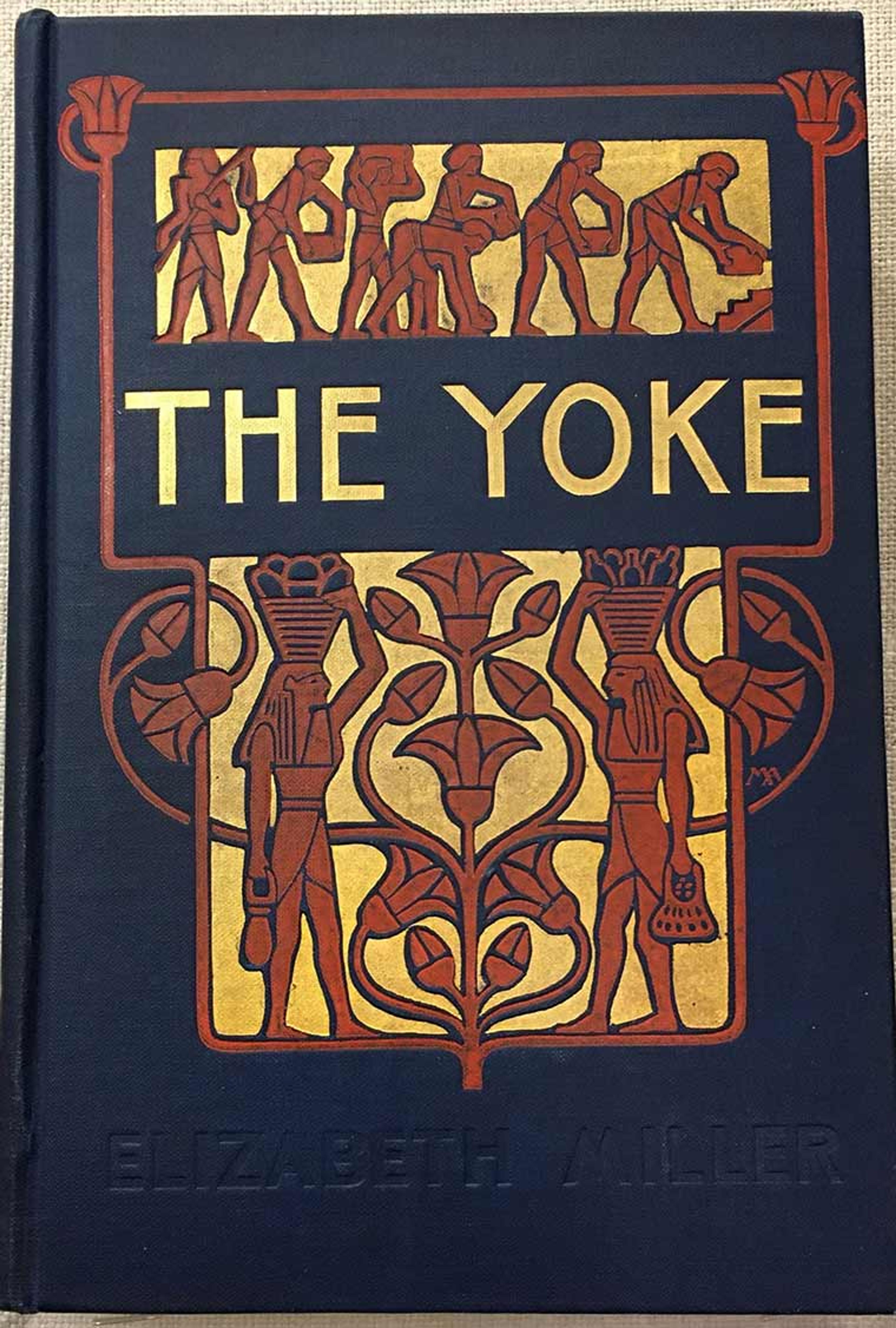
Elizabeth Miller, The Yoke (Indianapolis: The Bobbs-Merrill Company, 1904)
The Yoke is different from Armstrong's other bindings for several reasons, including its subdued palette, Egyptian figural motifs, and strong sans serif typeface.
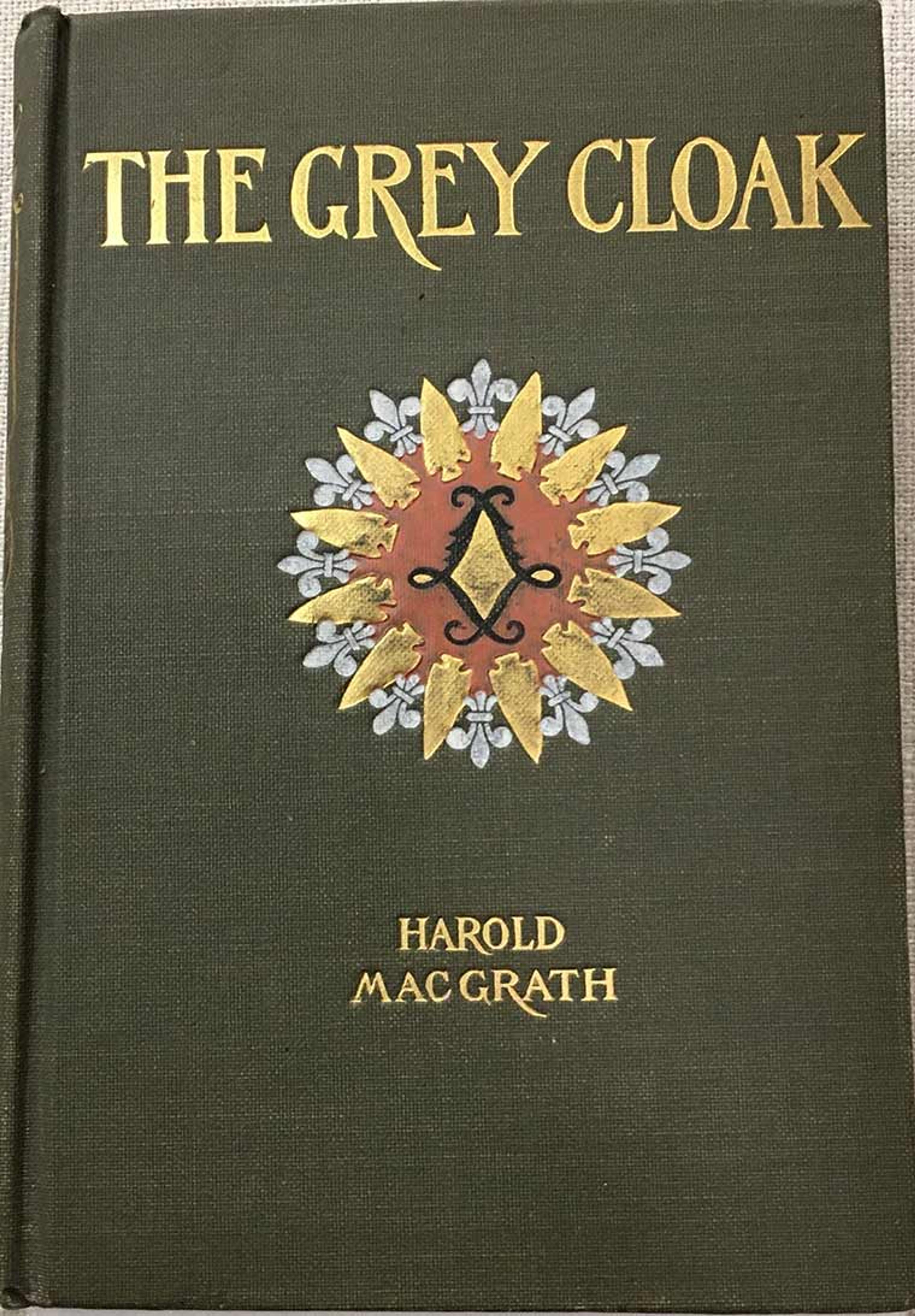
Harold MacGrath, The Grey Cloak (Indianapolis: Bobbs-Merrill, c1903). Unsigned, attributed to Margaret Armstrong
Armstrong's design for The Grey Cloak is uncharacteristically reserved yet elegant.
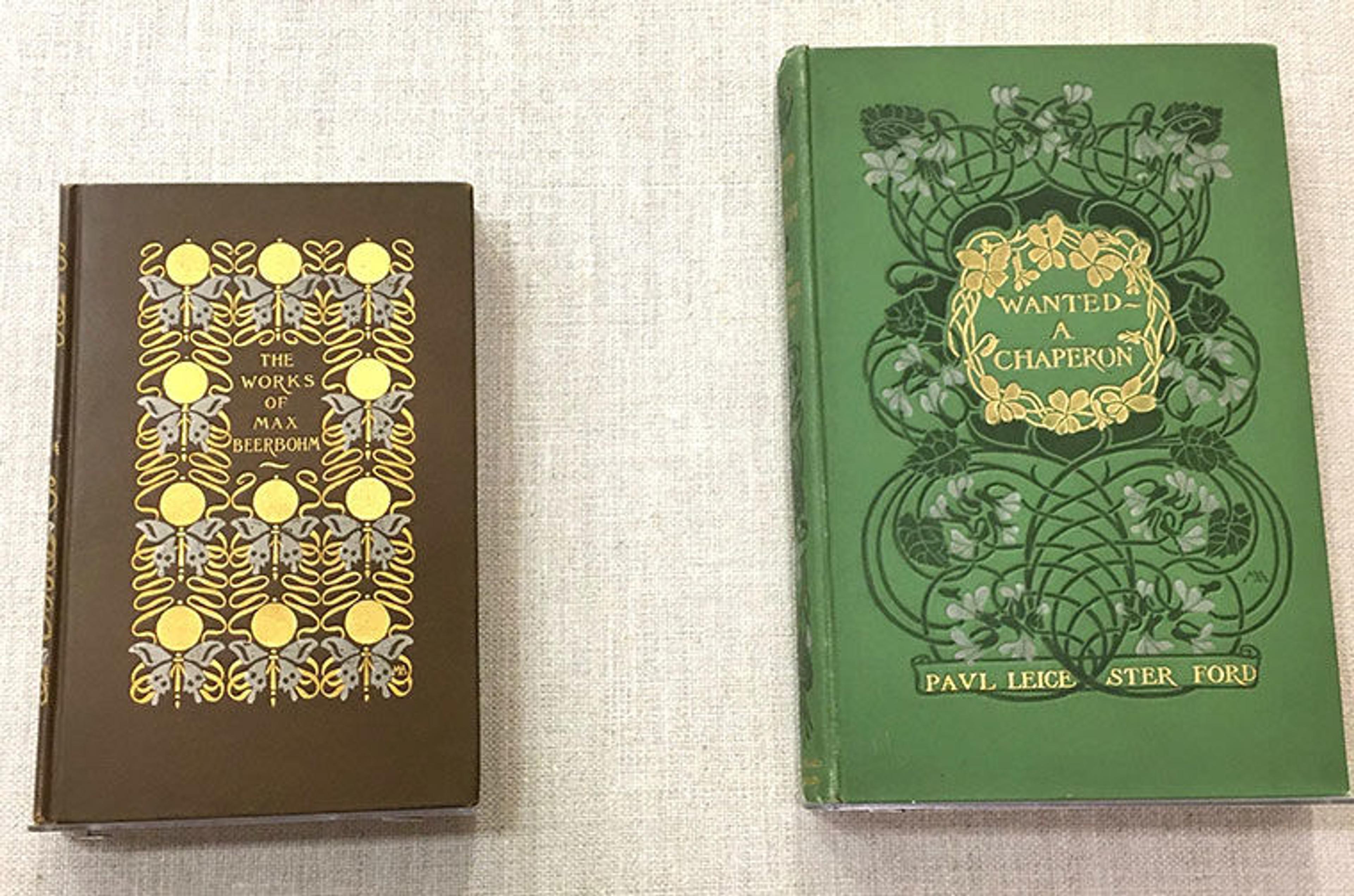
The Works of Max Beerbohm (New York: Charles Scribner's Sons, 1896). Paul Leicester Ford, Wanted—A Chaperon (New York: Dodd, Mead, 1902)
Two more of Armstrong's less characteristic designs are The Works of Max Beerbohm and Wanted—A Chaperon. The former, an anthology of writings by the English caricaturist, has a brown cloth stamped with symmetrical pattern of hand mirrors and butterflies. Wanted—A Chaperon is one of several covers that Armstrong designed for American author Paul Leicester Ford. It was issued in three different cloth colors: light purple, white, green, and this deluxe version with gold stamping.
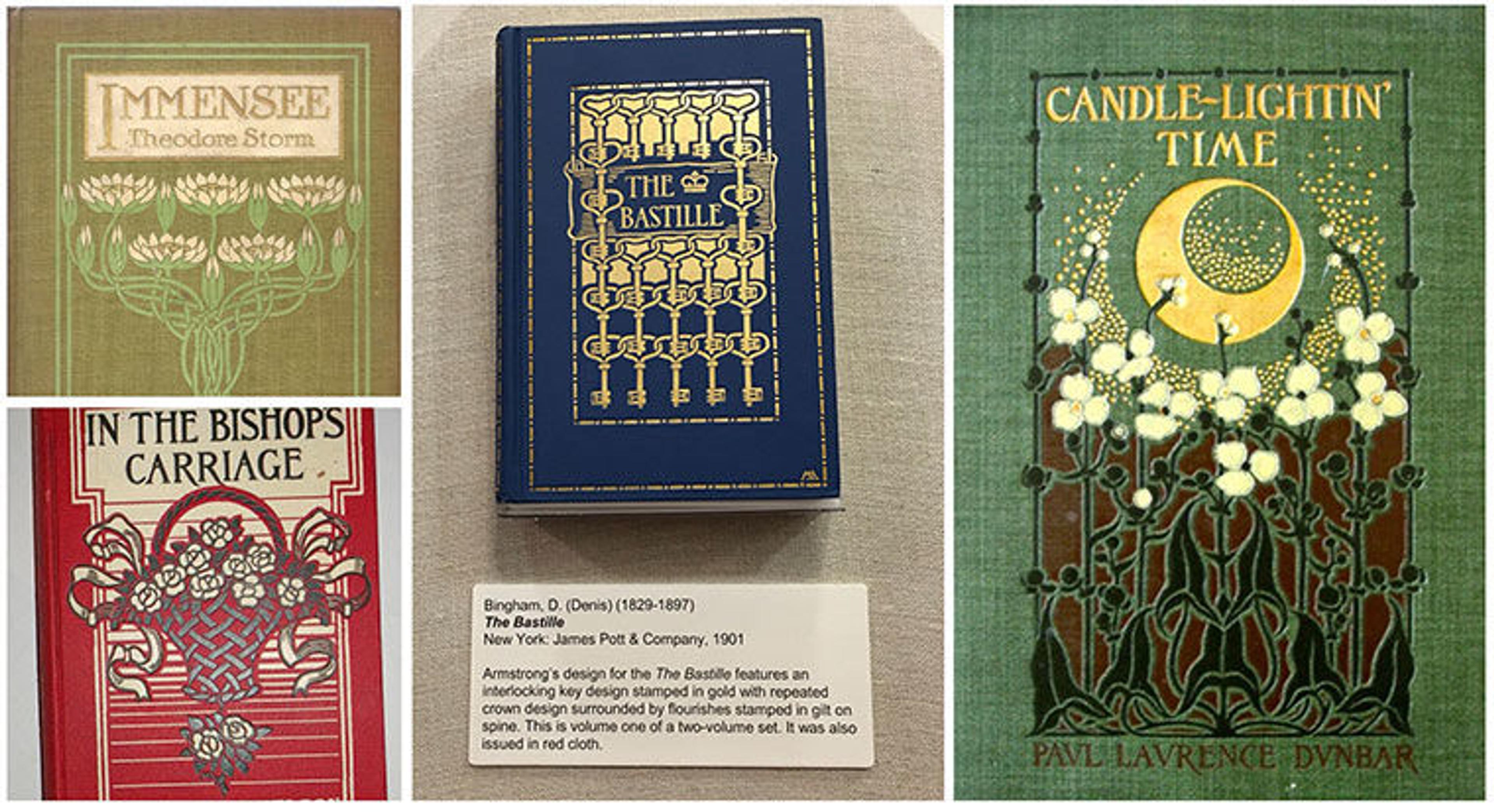
The final bindings on display at the four vitrine corners, are further representations of Armstrong's less typical designs.
A celebrated Armstrong binding, Candle-lightin' Time, at far right, has a whimsical design depicting a gold-stamped crescent moon shining above stylized cotton blossoms. Armstrong provided the page borders and half-title page decorations for this book of poems by Paul Dunbar. The book includes photographic prints by the Hampton Institute Camera Club.
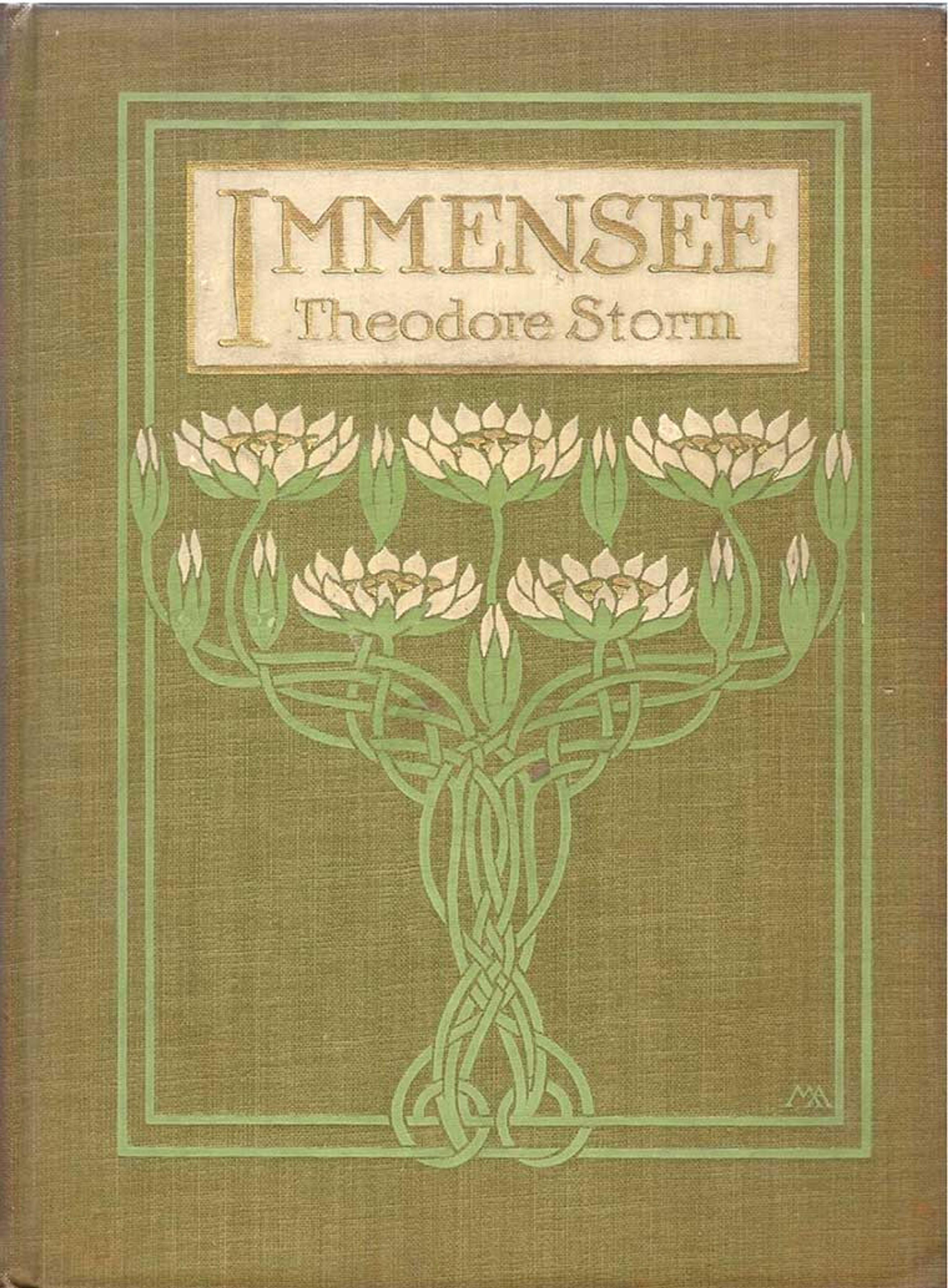
Theodor Storm, Immensee (Chicago: A. C. McClurg & Co., 1907)
For the cover of Immensee, Armstrong uses the key metaphor, a water lily, as a central element for this Art Nouveau book cover design with intertwined stems knotted through the double-ruled border. Cream endpapers are printed with the cover floral design in green.
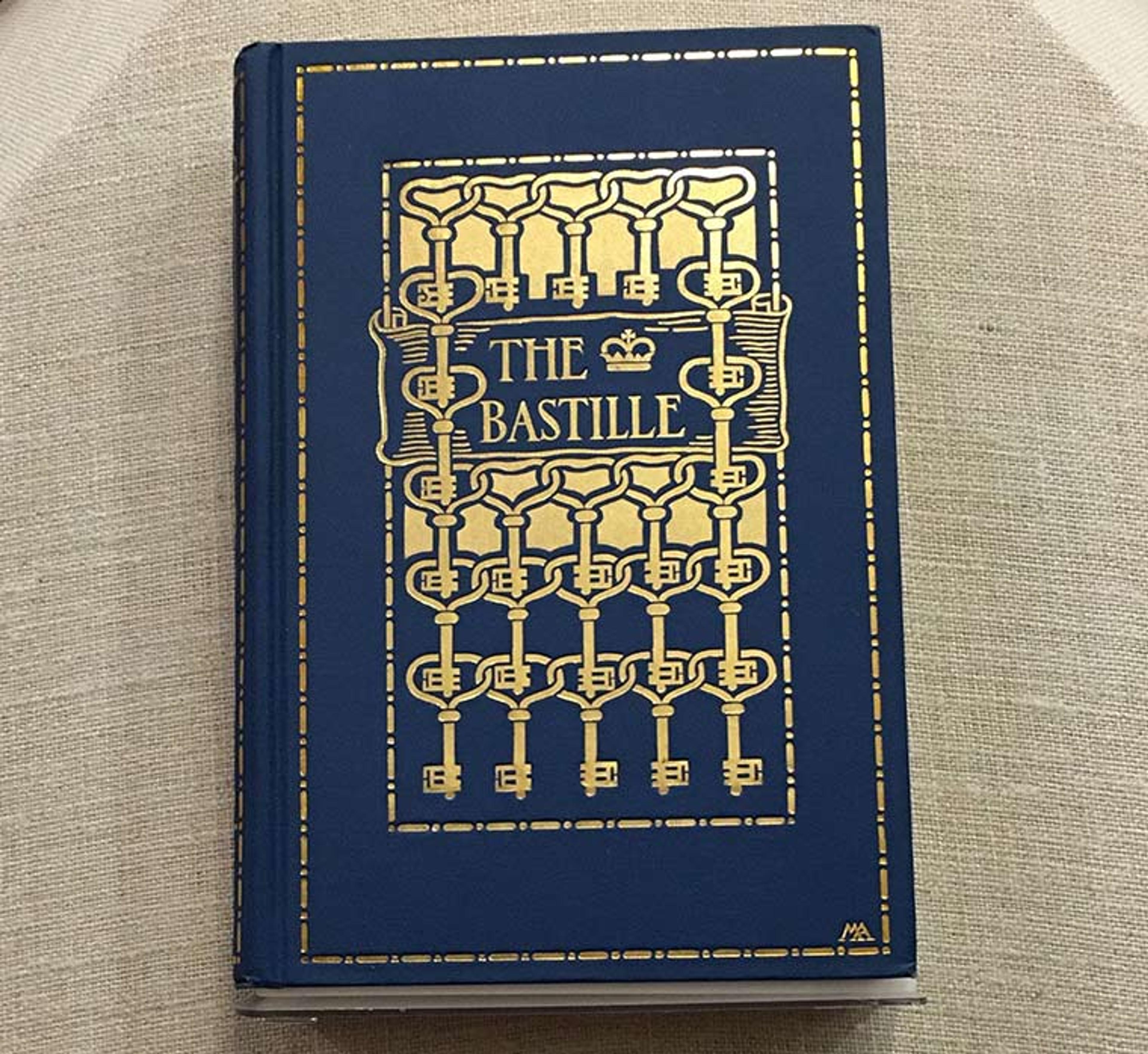
Denis Bingham, The Bastille (New York: James Pott & Company, 1901)
Armstrong's design for Denis Bingham's The Bastille features an interlocking key design stamped in gold with repeated crown design surrounded by flourishes stamped in gilt on spine. This is volume one of a two-volume set. It was also issued in red cloth.
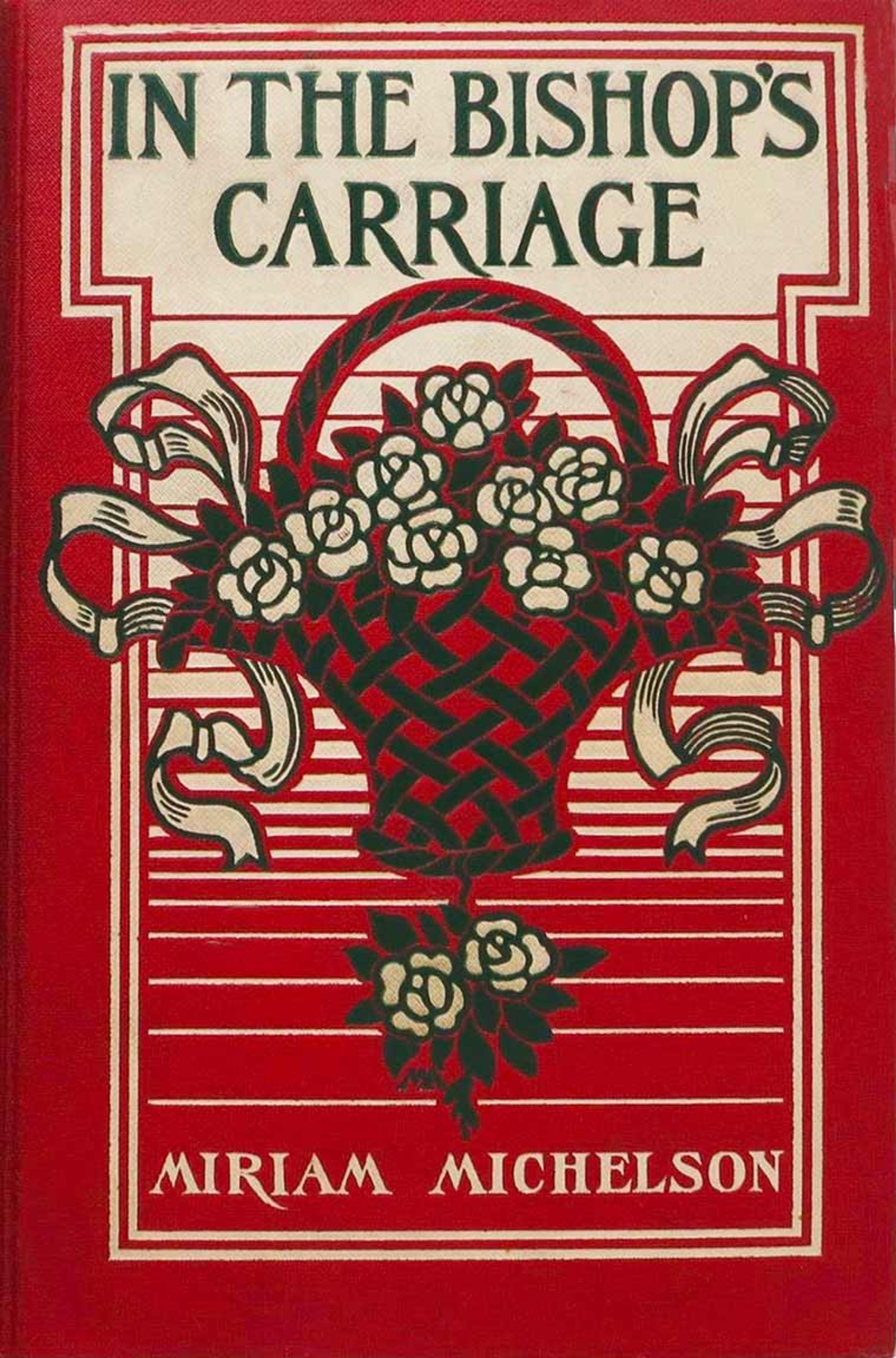
Miriam Michelson, In the Bishop's Carriage (Indianapolis: Bobbs-Merrill, 1904)
On Armstrong's final book cover in this display, In the Bishop's Carriage, her monogram is uniquely and cleverly hidden within the leaves directly above the author's name. Watson Library's copy has the original, plain paper dust jacket.
In addition to these Margaret Armstrong bindings, Watson Library has also acquired other American publishers' bindings purchased with funds provided by the Friends of Thomas J. Watson Library, spanning the early 1800s through 1930 including designs by Thomas Watson Ball, Benjamin Bradley, Frank Hazenplug, John Feely, Blanche McManus Mansfield, Alice Cordelia Morse, Amy M. Sacker, and Sarah Wyman Whitman.
All of these books can be requested through Watsonline and consulted in the Library when we reopen.
We look forward to welcoming you then.
